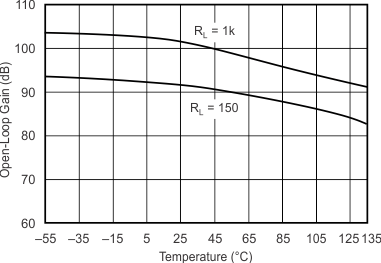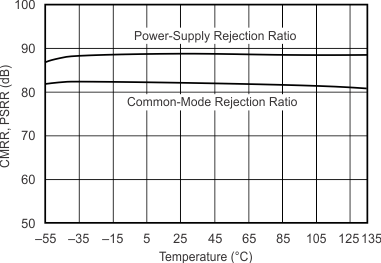ZHCSBR3C December 2013 – May 2018 OPA355-Q1
PRODUCTION DATA.
7.6 Typical Characteristics
TA = 25°C, VS = 5 V, G = 2, RF = 604 Ω, and RL = 150 Ω connected to VS / 2, (unless otherwise noted)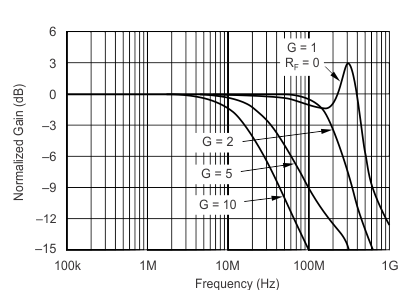
| VO = 0.1 VP-P |
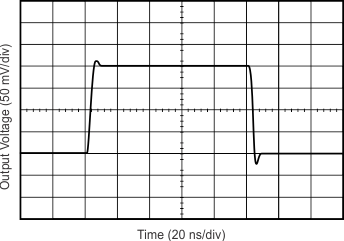
| G = 2 |
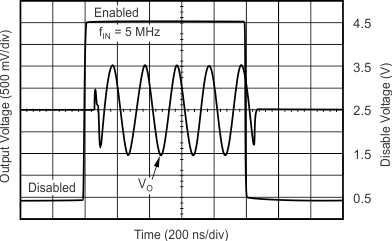
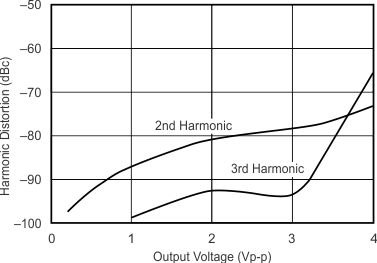
| RL = 200 | ƒ = 1 MHz |
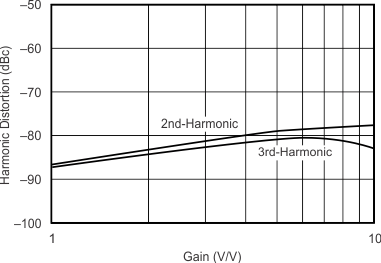
| RL = 200 | VO = 2 VP-P | ƒ = 1 MHz |
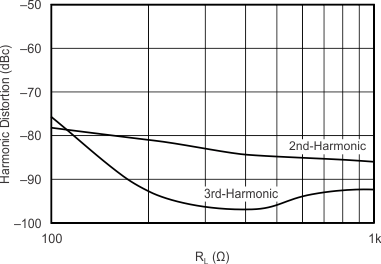
| ƒ = 1 MHz | VO = 2 VP-P | |
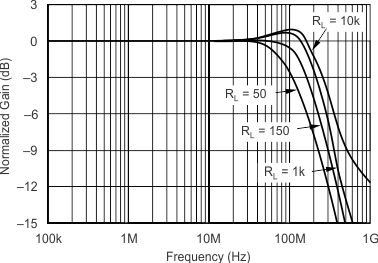
| CL = 0 pF | VO = 0.1 VP-P | |
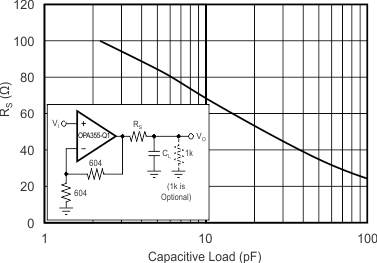
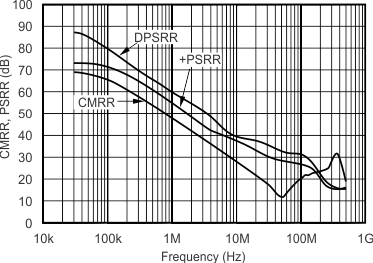
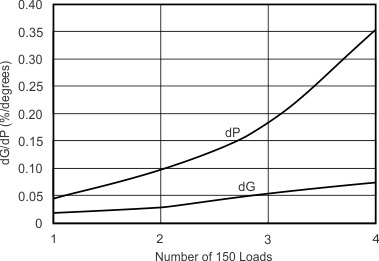
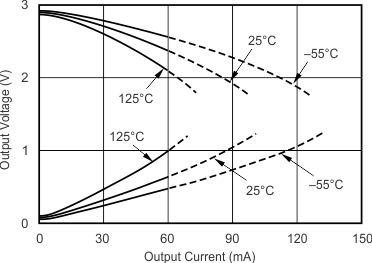
| Continuous currents above 60 mA are not recommended | |||
| VS = 3 V |
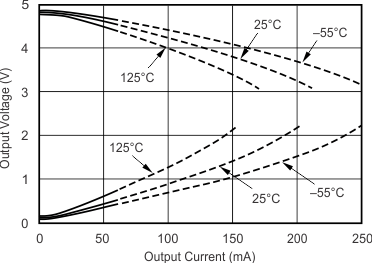
| Continuous currents above 60 mA are not recommended | |||
| VS = 5 V |

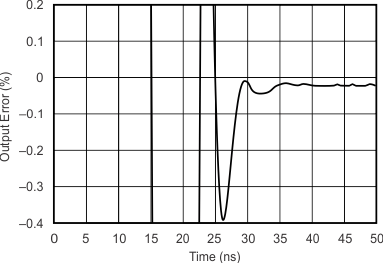
| VO = 2 VP-P |
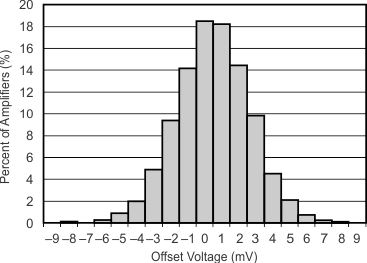

| VO = 0.1 VP-P |
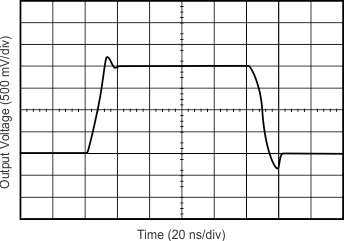
| G = 2 |
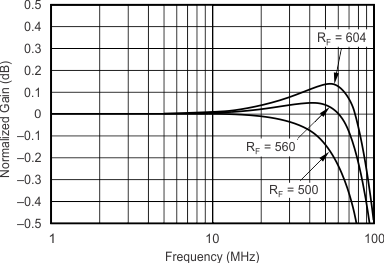
| CL = 0 pF | VO = 0.1 VP-P |
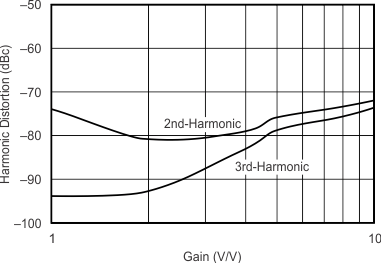
| RL = 200 | VO = 2 VP-P | ƒ = 1 MHz |
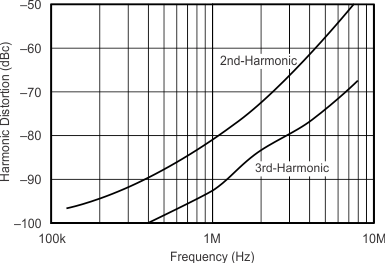
| RL = 200 | VO = 2 VP-P |
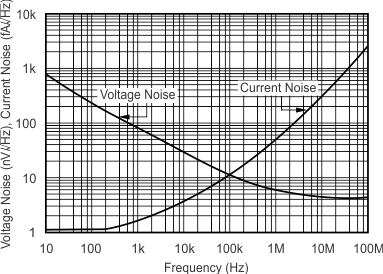
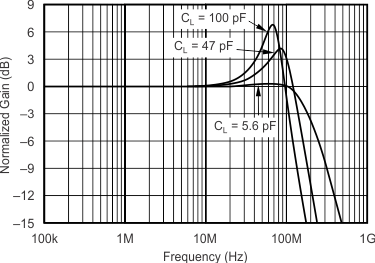
| RS = 0 | VO = 0.1 VP-P | |
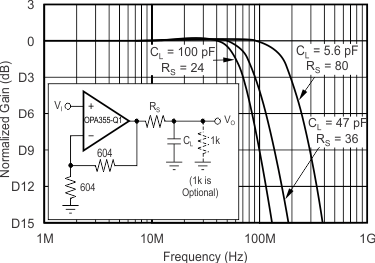
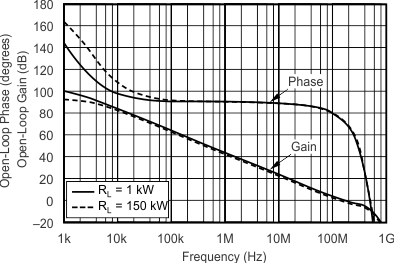
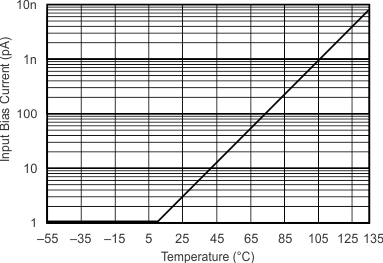
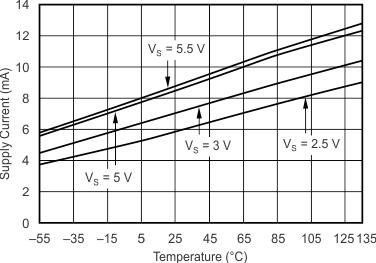
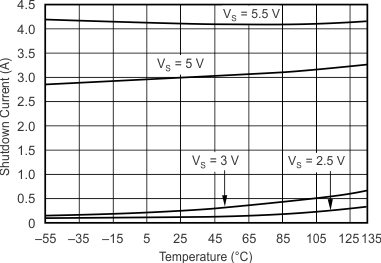
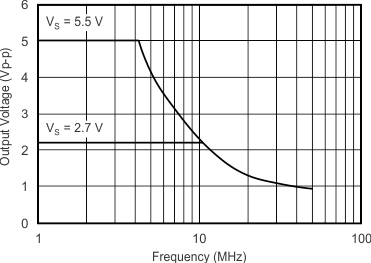
| Maximum output voltage without slew-rate induced distortion |
